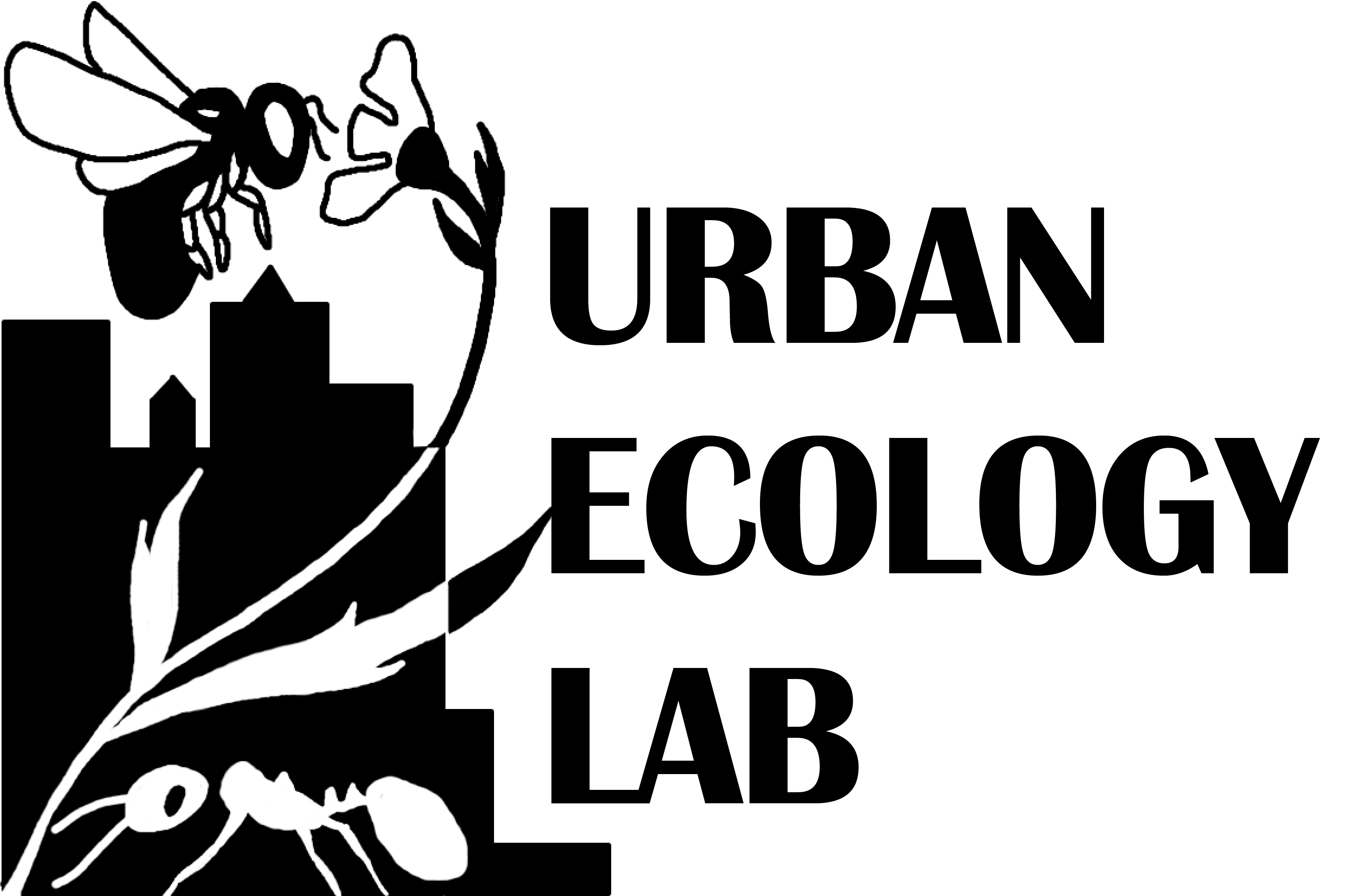CONTACT US
Please see my Google Scholar profile for the most up-to-date list
2024
Hamon, L. E., E Youngsteadt, R. E. Irwin, and C. E. Sorenson. 2024. As prey and pollinators, insects increase reproduction and allow for outcrossing in the carnivorous plant Dionaea muscipula. American Journal of Botany. DOI: 10.1002/ajb2.16279 pdf
2023
Meineke, E. K., E. Youngsteadt, M. K. Lippey, and K. C. R. Baldock. 2023. Urbanization shapes insect diversity. Chapter in: C. Nilon and M. Aronson, eds. Routledge Handbook of Urban Biodiversity, Routledge.
Ruzi, S., E. Youngsteadt, A. Hamblin, J. Kettenbach, H. K. Levenson, J. Collazo, and R. E. Irwin. 2023. Bee species richness varies through time in an urbanizing landscape of the southeastern USA. Global Change Biology. http://doi.org/10.1111/gcb.17060
Youngsteadt, E., and M. C. Keighron. 2023. Urban pollination ecology. Annual Review of Ecology, Evolution, and Systematics. https://doi.org/10.1146/annurev-ecolsys-102221-044616 link
Naumchik, M., and E. Youngsteadt. 2023. Larger pollen loads increase risk of heat stress in foraging bumblebees. Biology Letters. https://doi.org/10.1098/rsbl.2022.0581 link
Youngsteadt, E., A. Terando, J. Vukomanovic, and J. Costanza. 2023. Compact or sprawling cities: Has the sparing-sharing framework yielded an ecological verdict? Current Landscape Ecology Reports. https://doi.org/10.1007/s40823-022-00081-8 link (free to read) pdf
Youngsteadt, E., S. Prado, K. Keleher, and M. Kirchner. 2023. Can behavior and physiology mitigate effects of warming on ectotherms? A test in urban ants. Journal of Animal Ecology 92:568–579. link
2022
Youngsteadt, E., and M. Favre. 2022. How To Manage a Successful Bee Hotel (AG-915). NC Cooperative Extension. link pdf
Briggs, E., C. Baranski, O. Munzer, G. Garrison, J. Collazo, and E. Youngsteadt. 2022. Estimating bee abundance: Can mark-recapture methods validate common sampling protocols? Apidologie 53:10. link
2020
Levenson, H. K., and E. Youngsteadt. 2020. The Bees of North Carolina: An Identification Guide (AG-858). NC Cooperative Extension. link pdf
Youngsteadt, E., and A. J. Terando. 2020. Ecology of urban climates: The need for landscape biophysics in cities. Chapter 8 in: P. Barbosa, ed. Urban Ecology: Its Nature and Challenges. CABI. https://doi.org/10.1079/9781789242607.0144
Moylett, H., E. Youngsteadt, and C. Sorenson. 2020. The impact of prescribed burning on native bee communities (Hymenoptera: Apoidea: Anthophila) in longleaf pine savannas in the North Carolina sandhills. Environmental Entomology 49:211–219 link
2018
Youngsteadt, E., and C. Sorenson. 2018. Failure of pollen transport despite high bee visitation in an endangered, dioecious shrub. Annals of the Entomological Society of America. link
Terando, A. J., S. Prado, and E. Youngsteadt. 2018. Construction of a compact low-cost radiation shield for air-temperature sensors in ecological field studies. JOVE. DOI: 10.3791/58273 link
Hamon, L. E., E. Youngsteadt, R. E. Irwin, and C. E. Sorenson. 2018. Pollination ecology and morphology of Venus flytrap in sites of varying time since last fire. Annals of the Entomological Society of America. link
Youngsteadt, E., R. E. Irwin, A. Fowler, M. A. Bertone, S. J. Giacomini, M. Kunz, D. Suiter, and C. E. Sorenson. 2018. Venus flytrap rarely traps its pollinators. American Naturalist. lay summary linkpdf
Hamblin, A. L, E. Youngsteadt, and S. D. Frank. 2018. Wild bee abundance declines with urban warming, regardless of floral density. Urban Ecosystems. doi: 10.1007/s11252-018-0731-4 †Contributed equally link pdf
2017
Terando, A. J., E. Youngsteadt, E. K. Meineke, and S. G. Prado. 2017. Ad hoc instrumentation methods in ecological studies produce highly biased temperature measurements. Ecology and Evolution. doi: 10.1002/ece3.3499 link pdf
Savage, A. M., E. Youngsteadt, A. F. Ernst, S. Anderson Powers, R. R. Dunn, and S. D. Frank. 2017. Homogenizing an urban habitat mosaic: Arthropod diversity declines in NYC parks after Super Storm Sandy. Ecological Applications.
Hamblin, A. L.†, Youngsteadt, E.†, López-Uribe, M. M., and Frank, S. D. 2017. Physiological thermal limits predict differential responses of bees to urban heat-island effects. Biology Letters13:20170125. †Contributed equally. link pdf
López-Uribe, M. M., Appler, R. H., Youngsteadt, E., Dunn, R. R., Frank, S. D., Tarpy, D. R. 2017. Higher immunocompetence is associated with higher genetic diversity in feral honey bee colonies (Apis mellifera). Conservation Genetics 18:659-666 doi: 10.1007/s10592-017-0942-x. link pdf
2016
Youngsteadt, E., Ernst, A. F., Dunn, R. R., and Frank, S. D. 2016. Responses of arthropod populations to warming depend on latitude: evidence from urban heat islands. Global Change Biology 23:1436-1447. link pdf
Meineke, E. K., Youngsteadt, E., Dunn, R. R., and Frank, S. D. 2016. Urban warming reduces above-ground carbon storage. Proceedings B 283:20161574. link pdf
Youngsteadt, E., Moylett, H., López-Uribe, M., and Hamblin, A. 2016. T. B. Mitchell: the man behind The Bees of the Eastern United States. American Entomologist 62(3):157-162. link pdf
Dale, A. G., Youngsteadt, E., and Frank, S. D. 2016. Forecasting the effects of heat and pests on urban trees: impervious surface thresholds and the ‘Pace to Plant’ technique. Arboriculture and Urban Forestry 42(3):181-191. link pdf
Reese, A., Savage, A. M., Youngsteadt, E., McGuire, K., Koling, A., Watkins, O., Frank, S. D., and Dunn, R. R. 2016. Urban stress is associated with variation in microbial species composition—but not richness—in Manhattan. The ISME Journal 10:751-760. link pdf
2015
Youngsteadt, E.†, Appler, R. H.†, López-Uribe, M. M., Tarpy, D. R., and Frank, S. D. 2015. Urbanization increases pathogen pressure on feral and managed honey bees. PLoS ONE 10: e0142031. †Contributed equally.link
Youngsteadt, E., Henderson, R. C., Savage, A. M., Ernst, A. F., Dunn, R. R., and Frank, S. D. 2015. Habitat and species identity, not diversity, predict the extent of refuse consumption by urban arthropods. Global Change Biology. link pdf
Savage, A. M., Hackett, B., Guénard, B., Youngsteadt, E., and Dunn, R. R. 2015. Fine-scale heterogeneity across Manhattan’s urban habitat mosaic is associated with variation in ant composition and richness. Insect Conservation and Diversity 8:216–228. link pdf
Youngsteadt, E., Dale, A. G., Terando, A. J., Dunn, R. R., and Frank, S. D. 2015. Do cities simulate climate change? A comparison of herbivore response to urban and global warming. Global Change Biology 21:97-105. link pdf
2010
Youngsteadt, E., Guerra, P. and Schal, C. 2010. Divergent chemical cues elicit seed collecting by ants in an obligate multi-species mutualism in lowland Amazonia. PLoS ONE, 5:e15822. link
2009
Youngsteadt, E., Alvarez, J., Osborne, J. and Schal, C., 2009. Species specific seed dispersal in an obligate ant-plant mutualism. PLoS ONE, 4:e4335. link
Booth, W., Youngsteadt, E., Schal, C. and Vargo, E. 2009. Characterization of 8 polymorphic microsatellite loci in the neotropical ant-garden ant, Camponotus femoratus. Conservation Genetics, 10:1401-1403. pdf link
Booth, W., Youngsteadt, E., Schal, C. and Vargo, E. 2009. Polymorphic microsatellite loci for the ant-garden ant, Crematogaster levior (Forel). Conservation Genetics, 10:639-641. pdf link
2008
Youngsteadt, E., Nojima, S., Häberlein, C.,Schulz, S. and Schal, C. 2008. Seed odor mediates an obligate ant-plant mutualism in Amazonian rainforest. Proceedings of the National Academy of Sciences, 105: 4571-4575. link
2005
Youngsteadt, E., Fan, Y., Stay, B., and Schal, C., 2005. Cuticular hydrocarbon synthesis and its maternal provisioning to embryos in the viviparous cockroach Diploptera punctata. Journal of Insect Physiology, 51: 803-809. pdf
Youngsteadt, E., and DeVries, P. J., 2005. The effects of ants on the entomophagous butterfly caterpillar Feniseca tarquinius and the putative role of chemical camouflage in the Feniseca-ant interaction. Journal of Chemical Ecology, 31: 2091-2109. pdf


